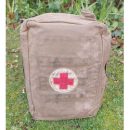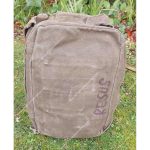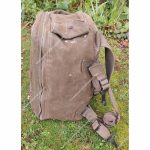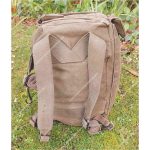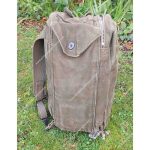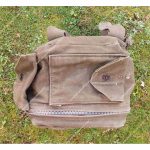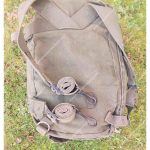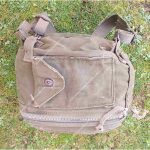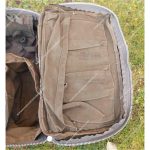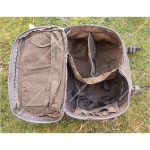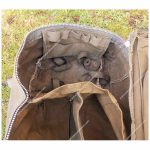Medical Instrument And Supply Set NO.5, Non Rigid (Aidman’s Pack)
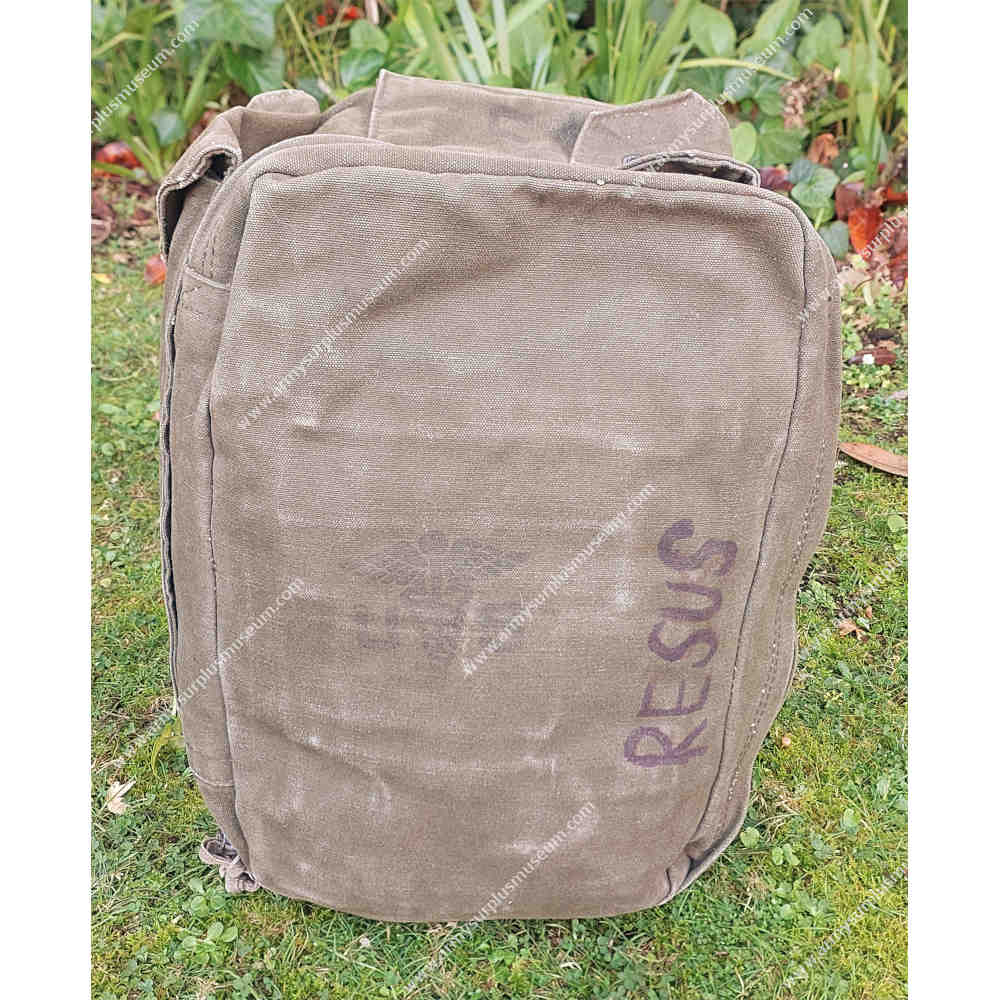
General Information
Name: Medical Instrument and Supply Set NO.5, Non Rigid (Aidman’s Pack).
Country of Origin: The United States.
Date of Production: 1985.
Manufacturer: Tennier Industries.
FSN: 6545-912-9890.
NATO Stock Number (NSN): 6545-00-912-9890.
Mil Spec: MIL-C-36020.
Contract Number: DLA-120-85-C-5025.
Colour: Olive Drab (O.D).
Equipment Family: None.
Size:
Height: 420cm.
Length: 235cm.
Width: 150cm.
Number Of compartments: Twelve.
Volume Capacity: 30L.
Weight: 1.5kg.
Waterproof: Water repellent.
Similar Objects
History
The Medical Instrument and Supply Set No. 5, Non-Rigid (Aidman’s Pack) was officially accepted into the U.S. inventory in 1962. It originated from a medical pack initially crafted by unit riggers for U.S. paratroopers during World War II. The Aid Man’s Pack was specifically designed for medical personnel in paratrooper units and was intended to be carried empty, to be filled with necessary medical equipment after landing. However, in practice, most paratroopers jumped with a fully loaded pack.
Over time, the Aid Man’s Pack became more commonly used by medics in standard line units. It frequently appears in photos of medics during the Vietnam War and later in Operation Desert Storm. The pack was also utilized by other medical units and, in some cases, by non-medical units, such as armored units, who used it as a ‘bug out’ bag—if they could get their hands on it.
The pack was designed to hold a large amount of medical equipment and could also accommodate a full Medical Instrument and Supply Set No. 3, Non-Rigid bag, along with additional items that the basic medical bag couldn’t hold, such as splints and IV equipment, if necessary.
Since the pack was designed for parachutists, it features two adjustable webbing straps with heavy-duty metal spring clips on its sides, allowing it to be securely fastened for jumping. The Aidman’s Pack was eventually retired from service in the late 1990s and replaced by the Bag, Medical, with the adoption of the MOLLE system.
Description
The No. 5 bag is constructed from olive drab cotton webbing duck and has a large rectangular shape. It opens at the front with a three-quarter length metal zipper that runs around the outer edge of the bag. The exterior side of the pack features three patch-style pouches: a long one on the left side and two of the same size on the top and bottom of the pack. These pouches are secured with flaps that close with ‘lift-the-dot’ clips.
On the right side of the pack, at the back, are two adjustable webbing parachute straps. These straps are 530 cm long and have a heavy-duty metal clip at each end.
The back of the pack is equipped with two heavy-duty webbing shoulder straps that are unpadded and adjustable. These straps have heavy-duty metal spring hooks at each end, which clip onto metal D-rings sewn to the base of the pack.
Inside the pack, the lid has three large patch-style pockets. The internal section is a large cavity divided into three parts. At the top of the pack, there are two square cotton duck open-top “boxes” that are secured to the edge of the pack with fabric hinges and can be flattened when needed.
The bottom of the cavity has two cotton webbing tape ties sewn in, designed to secure the Medical Instrument and Supply Set No. 3, Non-Rigid bag inside the pack. Below these ties is a rectangular webbing section with five webbing loops and, at the top, two open-top pockets at its base. These are used to hold five medicine vials.
Examples
Example One
Example one bears the word ‘Resus’ written in black marker on the front, suggesting it was previously designated for carrying a resuscitation kit. This marking appears to have been added prior to its disposal.
Additional Information
Main Compartment: 30L (as one unit)
Internal Compartments: 5L each.
External pouches: NA.
Internal lid compartments: NA.

